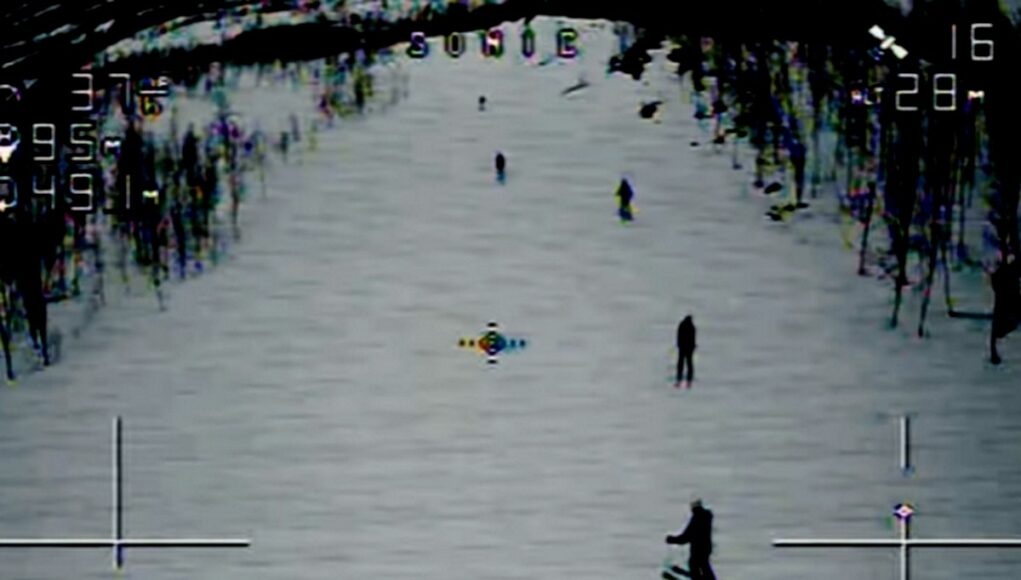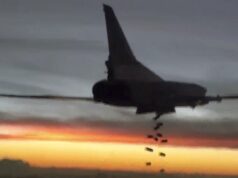The British soldier of 2025 no longer fears only the traditional threats of artillery, armour or air attack, he must now contend with a £400 quadcopter that knows his face from a TikTok video posted two years earlier, has been allocated to him by name, and is one of ten drones launched simultaneously to ensure at least one penetrates his unit’s electronic warfare screen.
This is not a distant prospect; it is daily reality in eastern Ukraine and the leading edge of Chinese prototyping for a possible Taiwan contingency.
This article is the opinion of the author and not necessarily that of the UK Defence Journal. If you would like to submit your own article on this topic or any other, please see our submission guidelines.
In the Donbas, open movement by formed bodies of troops has effectively ceased. First person view (FPV) drones and micro unmanned aerial vehicles (UAVs) weighing less than 250 g now account for 60 to 75 percent of all casualties on both sides (French Ministry of Armed Forces, 2025; Institute for the Study of War, October 2025).
A single operator working from a cellar can destroy a main battle tank or pursue a wounded soldier until he bleeds out. Russian units openly describe these missions as “human safaris” on Telegram channels, while Ukrainian medics report drones hovering above casualties, waiting for movement before detonating.
The forward edge of the battle area (FEBA) has become a permanent, transparent kill box. Infantry live underground in trench networks reminiscent of 1917, emerging only under thermal ponchos or at night. Vehicle movement is restricted to pre dug covered routes. The psychological effect is profound: soldiers know that visibility equals mortality.
From Mass to Individual Targeting
The true revolution lies not in the drones themselves, cheap and numerous though they are, but in the fusion of three enabling technologies: artificial intelligence and machine learning (AI and ML), open source intelligence (OSINT), and the involuntary creation of detailed digital twins by almost every citizen of the connected world.
Every serviceman and woman leaves an indelible digital footprint. Geotagged photographs, Strava running maps, family posts on Instagram, VKontakte or TikTok, school yearbooks uploaded by proud parents, wedding albums posted by photographers, all are harvested automatically by state and non state actors.
Commercial facial recognition models trained on billions of publicly available images can now identify an individual with high confidence from a low resolution drone feed. Once a face is matched, the drone can be programmed to loiter until it achieves visual confirmation, even if the target has removed rank slides or changed into civilian clothing.
Current doctrine in several armies is shifting towards deliberate redundancy. High value individuals (officers, medics, anti tank missile gunners, signallers) are allocated multiple drones simultaneously, typically three to ten, to defeat jamming or interception. The cost is trivial; the psychological and operational impact is decisive.
Infrastructure as Soft Targets
The same targeting methodology is not limited to personnel. Electrical junction boxes, mobile phone masts, water pumping stations, railway signalling cabins and fuel depots are static, photographable objects.
A swarm loaded with a reference gallery of 4,000 critical nodes, the approximate number required to black out Taiwan’s national grid, could paralyse a modern society in hours. Every one of those nodes already appears in open source mapping, tourist photographs, and government environmental reports.
The People’s Liberation Army has been conducting large scale AI enabled swarm exercises since at least 2023. The “Jiutian” mothership UAV releases hundreds of micro drones; fibre optic guided FPVs provide real time control immune to jamming; “Bullet Curtain” counter swarm concepts are in advanced field trials (CNA, September 2025; Asia Times, April 2025). Production capacity is staggering: DJI and its supply chain can manufacture more combat capable airframes in a month than the entire Western defence industry produces in a year. Unit cost for a basic kamikaze drone is now £180 to £300.
A Taiwan invasion scenario would almost certainly open with a mixed wave of ballistic missiles and thousands of suicide drones launched from fishing vessels, container ships and submerged tubes. Pre identified reservists, faces scraped from Facebook, Line and Instagram, would be hunted individually while critical infrastructure is systematically dismantled. The island’s defenders possess excellent counter drone systems, but none are designed for the volume the PLA can generate.
Demonstrations Rather Than Deployment
The West is not ignorant of these developments. DARPA’s OFFSET programme, the UK’s Project Theseus, and NATO’s Allied Persistent Surveillance from Space initiatives have all produced impressive demonstrations. Palmer Luckey’s 2025 TED address warned explicitly that autonomous defensive swarms are required yesterday.
Yet operational fielding at scale remains years away. Britain’s 2024 Drone Strategy and Project COLD FIRE are funded in tens of millions, not the billions required for mass production. Ukraine’s battlefield improvisation continues to outpace most formal Western programmes.
The Gap in Ruthlessness and Scale
The uncomfortable truth is that liberal democracies have thus far shown neither the industrial capacity nor the willingness to match authoritarian states in the weaponisation of consumer technology and personal data. Social media blackouts, facial obscuration and operational security discipline can reduce the problem but cannot eliminate it while families remain online and data brokers continue to trade.
The battlefield has become a panopticon (prison). Anonymity is no longer possible; the digital twin betrays the flesh and blood original. The side that best exploits this reality, harvesting faces and nodes, loading them into cheap autonomous swarms, and accepting the ethical and legal ambiguities, will achieve decisive overmatch at trivial cost.
Ukraine is the proving ground today.
Taiwan may be tomorrow. Unless the United Kingdom and its allies rapidly close the gap in both production scale and doctrinal acceptance, British soldiers deployed to a high intensity battlefield in the late 2020s will face an enemy that already knows their names and has allocated multiple drones to each of them before the first shot is fired.














The clock is ticking .
But drone swarms can be taken out by relatively simple bullet shrapnel.
So old school 30/40/57mm has role to reach to protect. On a smallish island like Taiwan that is actually possible. Obvs needs to be multi layers to protect the nodes from being overwhelmed.
Drones greatly favour the defender. We should embrace them. Drones have humiliated Russia and now make China’s calculus over Taiwan much harder. It’s also worth pointing out that heavily armoured western tanks have remained largely immune from them while Russian and older Chinese models are incredibly vulnerable to them.
A armed drone swarm is considerably less dangerous than an artillery battery and the number one benefit of drones is still in providing targeting data for artillery.
A rapid return to air burst fragmentation artillery as well as MAZERS will rapidly blunt drones swarms effectiveness in the way portable mortars did to machine guns in WW1.
How good is the facial recognition AI on a $400 drone? Can it really cope with a hoodie, camo make up and wrap-around sunglasses? For many years some pubs in London have insisted hats are removed for the cameras; that’s not something Russian drones can do.
Then wear a balaclava.
My thought exactly
Phew! Safe as I’ve never been stupid enough to have a Tik-Tok account.
Does feel somewhat Darwinian…
The best anti drone weapon is a drone:
‘Ukraine has for the first time used a domestically produced interceptor drone to destroy a Russian jet powered Geran-3—known internationally as the Iranian Shahed-238—during an overnight attack.’ 30 Nov 2025
Drone warfare in Ukraine is developing in miniature pretty much as air warfare developed in WW1, a battle for air superiority with fast developing technology.
Once Britain and France had achieved air superiority, the scene was set for the combined arms battles of Hamel and Amiens.
NATO should expect air superiority, but drone warfare reduces the advantage of having it. The side with the least ethical & legal concerns also benefits. Whilst we are pondering this, perhaps UK should be forward deploying to NATO Baltic countries and workout the drone environment.
I very much agree with the forward deployment of small ‘tripwire’ formations in Eastern Europe, Scandinavia and the Baltic States.
The lack of a credible conventional land deterrent by Britain in Europe does however mitigate the deterrent utility of any such forward deployed ‘tripwire’.
In my humble opinion, air superiority now encompasses very low level air/drone warfare. I have no doubt that this country’s close relationship with Ukraine will give us the benefit of their up to the minute experience of drone warfare developments on the frontline.
The concern is that HMG, at the highest level, has not fully appreciated the weakness of our Armed Services in the round and the scale of investment required to restore that verifiably credible conventional deterrent that once secured ‘The Long Peace’ in Europe 1945-2014.